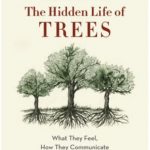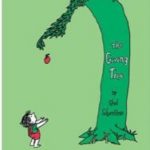I’ve always been connected to trees.
As a child I spent a lot of time with my great aunt, Tante Liesbeth. She lived in what was then called “the Transvaal,” a former province just north of the Vaal River in South Africa. She had a country store in a forestry reserve near the town of Sabie.
An incredible pine forest surrounded my great aunt’s house. I loved walking in those trees — and I loved the smell. At the bottom of her garden stood a cork tree. (Aptly named as we get our wine corks from its bark.) I would spend hours playing under that tree. I always felt safe and protected by it.
My real fascination with trees came when I met a 2,000-year-old baobab tree in the northern part of Southern Africa. It was the most massive, incredible tree I had ever seen. I still dream of sitting in it — surrounded by its’ roots and feeling completely invisible to the world.

Wild dogs and Baobab Tree in Luangwa National Park Zambia | FreePik
Thinking back, it seems like we often talked about trees. One discussion that followed me throughout my life occurred while we were camping in Millwood Forest in the Western Cape. In that setting, a guide explained to me how these ancient trees, living around our campsite, survived the harsh conditions of winter and fire. It was because the older established trees would send nutrients to the younger trees that needed help surviving. I thought this was amazing.
The science
In his 2017 book, The Hidden Life of Trees: What They Feel, How They Communicate–Discoveries from A Secret World, German Forester Peter Wohlleben describes the science behind that explanation of older trees nurturing their young. I highly recommend the book to open your eyes up to a whole other life of trees.

As you might have guessed, my love of trees continued into my adulthood. The Giving Tree by Shel Silverstein remains one of my all-time favorite books. Silverstein wrote it in 1964 and it is based on the same premise as the science behind Wohlleben’s book. I must admit that The Giving Tree moved me every time I read it to my children and grandchildren.

A couple of years ago when my grandson was 6 or 7, he began telling me how connected he felt to trees. One day when I was picking him up from school, he came out bent over clutching his stomach. When I asked him what was wrong, he told me that the tree in the school yard let him know how it felt when the kids kicked it!!! Wow. I like to think he gets his affinity for trees from me.
Trees for Health
For years we’ve heard about the benefits of “green space” for our health and the environment. In urban planning, green space includes public parks and gardens. Often city planners include cemeteries when counting the acres of green space in city environments.
The non-profit organization, Project Evergreen, does a good job documenting the economic, environmental, and lifestyle benefits of green space on their website. They are thorough in sourcing the research that supports these listed benefits. Personally, I have experienced many of those lifestyle benefits – hiking through a forest, gazing across a meadow, and playing with my grandsons in the park.
What I had not considered, was the importance of trees to our health.
After reading Why Trees Can Make You Happier by Jill Suttie in the April 26, 2019 edition of Greater Good Magazine, I was surprised about how much trees factor into our mental and social wellbeing. It’s more than green space – it’s also “tree space.”
Tree Space
In study after study, Suttie presents evidence of how living and working around trees help us feel less stressful in our lives and more restored. A study conducted in Toronto that she shared with us, Neighborhood greenspace and health in a large urban center, concluded that:
“…having 10 more trees in a city block, on average, improves health perception in ways comparable to an increase in annual personal income of $10,000 and moving to a neighborhood with $10,000 higher median income or being 7 years younger.”
“Clearly,” Suttie wrote, “there’s something healing about trees.” I whole heartedly agree.
Tree Consciousness
Being more conscious of trees is good for our health. Trees are the lifeblood of the earth — including us. Because of trees, we have clean air. Trees take the bad and make it good for all living things. For example most people understand that trees take in poisonous carbon dioxide and release clean oxygen.
This healing source from trees obviously goes beyond the physical. Trees help us spiritually too as evidenced in the Greater Good article above.
In a 2018 article by Conscious Reminder, Amazing Tree Energy: How Trees Help Us Heal, they remind us that trees help us open our spiritual channels. They also remind us that we need to reciprocate to help the trees unblock their energy channels.
I encourage all of us to spend more time with the trees around us and to plant more trees when and where we can. My inner self may ask me – “have you hugged a tree today?” I want that answer to be “yes.”
It’s time to enjoy nature’s canopy — trees
I want to close the article by sharing with you the source that got me to thinking about trees. My inspiration comes from Beth Moon. Moon spent 14 years photographing ancient trees. Her photos are amazing.

Check out some of her tree photos in the BoredPanda article Ancient Trees: Woman Spends 14 Years Photographing World’s Oldest Trees. You can find additional photo subjects at Beth Moon Photography. Her 2014 photo book, Ancient Trees: Portraits of Time, is available through multiple booksellers.
May trees surround you in work and in play for better health in your body, mind, and spirit as well as lifting the spirits in the trees you touch.
Ellen
Ellen Lewinberg
Bioenergy Therapist
Instructor in Healing Transformation
ellen@healingtransformation.ca
+1 416 203 2744
Toronto, Canada
P.S. I hope this article inspires you to venture out into nature and to hug a tree.